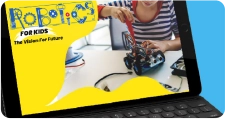

Arpana
What Does the Future Hold for the Kids?
Circa 1990s, my father came home with the news of the computerization of his office. Most of the jobs will be automated, he informed. He was a photojournalist, and he used to work with a reputed media house. Naturally, this news got him thinking about the job scenario and assignments. He kept wondering how computerization would impact photographers, photography, and our future!
In the 1990s, the future seemed alien and the job market unpredictable. Now, when I look back, I realize the present is not as gloomy as it seemed then. It is true that today, technology has become an inseparable part of most of the jobs around the world. It is also true that technology has closed some doors, but it has opened many.
In the last three decades technology has revolutionized the media industry—computerized offices, automated work, digital platforms elbowing the print editions to a corner, but the demand for photographers and photographs or writers have not diminished, rather it has grown. Photos are integral to the digital medium. From websites to social media platforms, photos are a must.
Digital photography differs from conventional photography. In those days, the photographers had to click photos and sometimes develop the print., but today, photographers have to know it all—they have to be tech-savvy, fluent in the latest technologies, and familiar with hardware and editing software like Photoshop, etc.
The crux of the matter is that many jobs will disappear and many will evolve just like photography. You just have to stay on top of things.
Be adaptable and up-to-date with the trends in your field and constantly upgrade your skills.
How can you make the future favorable for your child?
Use Information
Parents are the guiding force in the life of their children, so they should learn about using information wisely.
The world is going through the transformative impact of the Fourth Industrial Revolution. Reports claim jobs are susceptible to automation, or 50 percent current jobs will vanish after 20 years. Artificial Intelligence and Robotics will grab the white-collar and blue-collar jobs! Artificial General Intelligence (or AGI) would perform any task that humans do.
Such news makes parents feel overwhelmed and stressed. Because most of the reports show a boom in the science and technology sector, but not everyone can become a programmer or a computer engineer!
What about children whose interest is not in tandem with the future job market? What should parents do in such a scenario?
The answer is simple. Parents should make an informed decision.
The Fourth Industrial Revolution makes our future intriguing and interesting. You can predict some parts of the future, rest remains a mystery for all and sundry. The same goes for the job market. A lot of research and reports show a certain trend, but still, some things cannot be projected.
You can, however, use the information as a base to prepare for the future. Here, the future means children, their education, and learning the right skill sets.
Keep Tabs on New Developments
Automation is a reality. But one cannot deny that behind every automation, technological advancement, is a creative and analytical human mind. And that’s the reason STEM – Science, Technology, Engineering, and Mathematics – has become STEAM. A stands for Art and it is an integral part of STEAM Learning. Art enhances creative thinking, while STEM learning sharpens analytical thinking. So, science and art go hand-in-hand.
Experts have integrated art into STEM because many feel it helps in enhancing critical skills like problem-solving and critical thinking. It also helps in collaboration and communication.
Not just that, Art has several benefits. It leads to flexibility and adaptability; productivity and responsibility. It also makes children innovative. It is given that children need the necessary tech skills to succeed, but they also require these skills for a successful career in any field.
In the gaming industry and app development sector, there is an immense demand for content designers, artists, writers, etc.
Observe New Trends in Other Sectors
A McKinsey report throws light on various career paths requiring non-technical skills or human skills to be precise, such as communication, listening, and critical thinking. It says several jobs are requiring human interaction like people management, applying expertise, and social interactions, which are less prone to automation. These jobs need human touch and machines cannot match human performance for now in these sectors.
Investments in infrastructure and buildings can create additional demand for human force. According to the report, demand for up to 80 million jobs in the trendline scenario and, in the event of sped up investment, up to 200 million more in the step-up scenario can be created. These jobs include architects, engineers, and other skilled tradespeople.
The Renewable Energy Industry is another area of hope. An investment in energy efficiency and climate adaptation can generate employment. Wind and solar; energy-efficiency technologies; and adaptation and mitigation of climate change will create up to 10 million new jobs in the trendline scenario and up to 10 million additional jobs globally in the step-up scenario, says the report.
Bottom line is that every problem has a solution; you just need to discover it. Train your children and equip them with skills that will help them in getting a grip on the technological changes.










